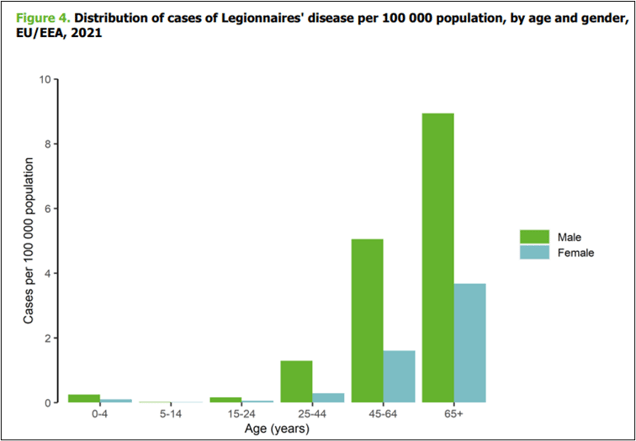If you follow news feeds on the topic of Legionella then you will notice that there are several headlines relating to Legionella in our schools.
From closures to unwanted headlines, the topic of Legionella in our schools can be quite emotive.
- Nuneaton school building shut as legionella bacteria found
- Chaos for pupils as new school opening delayed after legionella found in water system
- Academy to remain closed after holidays as legionella found in water
- Legionella discovered in water system at Milton Keynes school
- Canterbury Grammar School ordered to due to Legionella fears
- Ipwwich School closed due to Legionella
Why is there a Legionella risk in Schools?
 A lot of these headlines come during and just after school holidays when usage of the water systems has been reduced compared to what they would be during term time, potentially leading to stagnation, especially if they are not managed effectively.
A lot of these headlines come during and just after school holidays when usage of the water systems has been reduced compared to what they would be during term time, potentially leading to stagnation, especially if they are not managed effectively.
Commissioning a full Legionella Risk Assessment, by using an accredited supplier, will identify any potential risk(s) associated within your areas of responsibility, and more importantly, recommendations to reduce or eliminate the risk.
If infrequently used outlets are not included in your Legionella flushing regime at least weekly, in line with the guidance in HSG274, then there is the potential for water to stagnate and provide ideal conditions for bacterial growth. If systems are not regularly flushed, it is not overly surprising that when sampled Legionella bacteria are detected.
How to reduce the risk of Legionella in Schools?
As we want to protect the health and safety of our children and the staff in schools then the people responsible for the water systems will need to demonstrate that they are taking suitable remedial actions to deal with the unwanted bacteria. This then leads to remedial works such as cleaning and disinfection of the systems which would likely not have been necessary if a pro-active Legionella flushing regime was in place.
But back to the original premise, what is the risk to our children?
If you look at the official figures there are very few cases of school-age children being diagnosed with Legionnaires’ Disease. The figures from the 2021 report from the ECDC* show only 1 child (aged 5-14) diagnosed in the year 2021. Generally, children of school age are not considered in a high-risk category for contracting Legionnaires’ Disease. When we look at susceptibility then the typical categories of high risk would be the very young (newborn and premature babies), the elderly as well as those with underlying health conditions.

*European Centre for Disease Prevention and Control – Legionnaires’ Disease Annual Epidemiological Report for 2021
So why do we see headlines relating to our schools when it would appear that school-age children are not especially at risk of developing Legionnaires’ disease?
Susceptibility is a key aspect of Legionella risk, although it has been known to affect otherwise fit and healthy individuals. The main point is that we do have a general duty of care to protect people from harm, and as Legionnaires’ disease is very much considered a preventable illness (we know how to manage water systems to minimise the risk of Legionellosis) organisations including schools do need to have in place reasonable steps to control the risk.
The health of our children is an emotive issue, and any concern is seen as a newsworthy issue in the media. Whilst they may not be in one of the high-risk categories for Legionellosis there is a risk that can be easily managed with the right regime in place.
Learn more about our Legionella Awareness training, ideal for caretakers & janitors
If you would like help with Legionella risk assessments, the development of a Water Safety Plan, or to learn more about Legionella training options, consult with one of our experts on water hygiene.
Please note that the information shared in this blog is accurate as of the original publication date - April 2025.
© Water Hygiene Centre 2025









